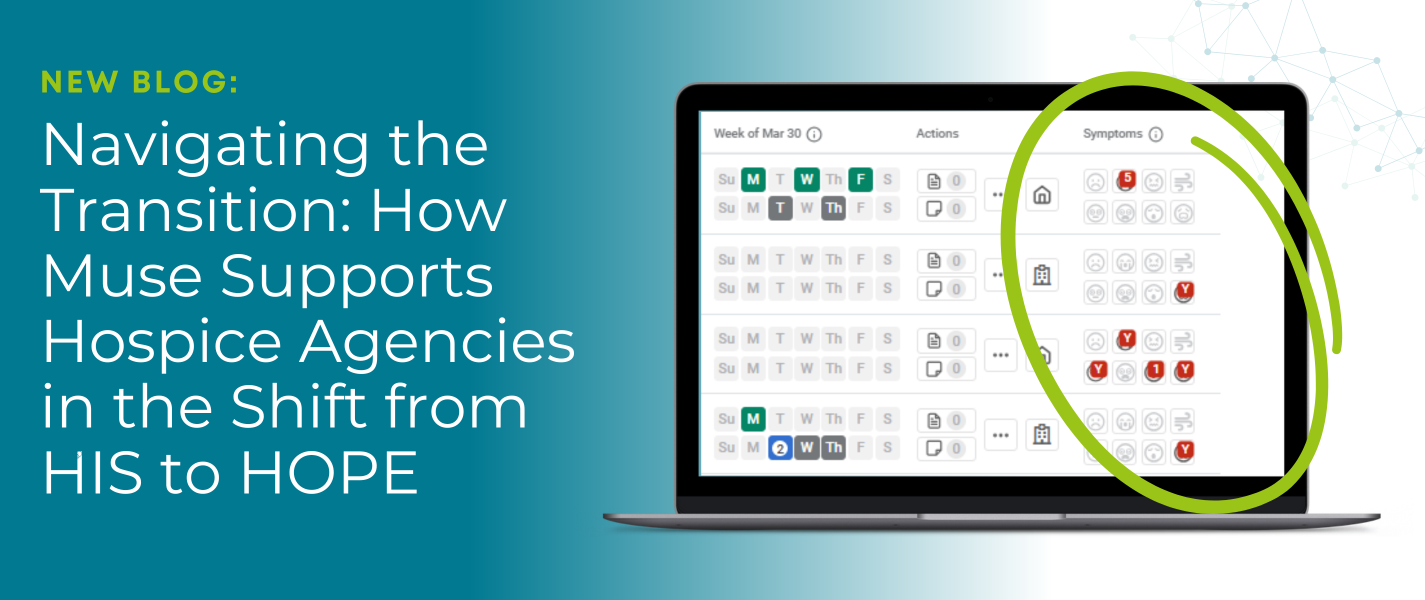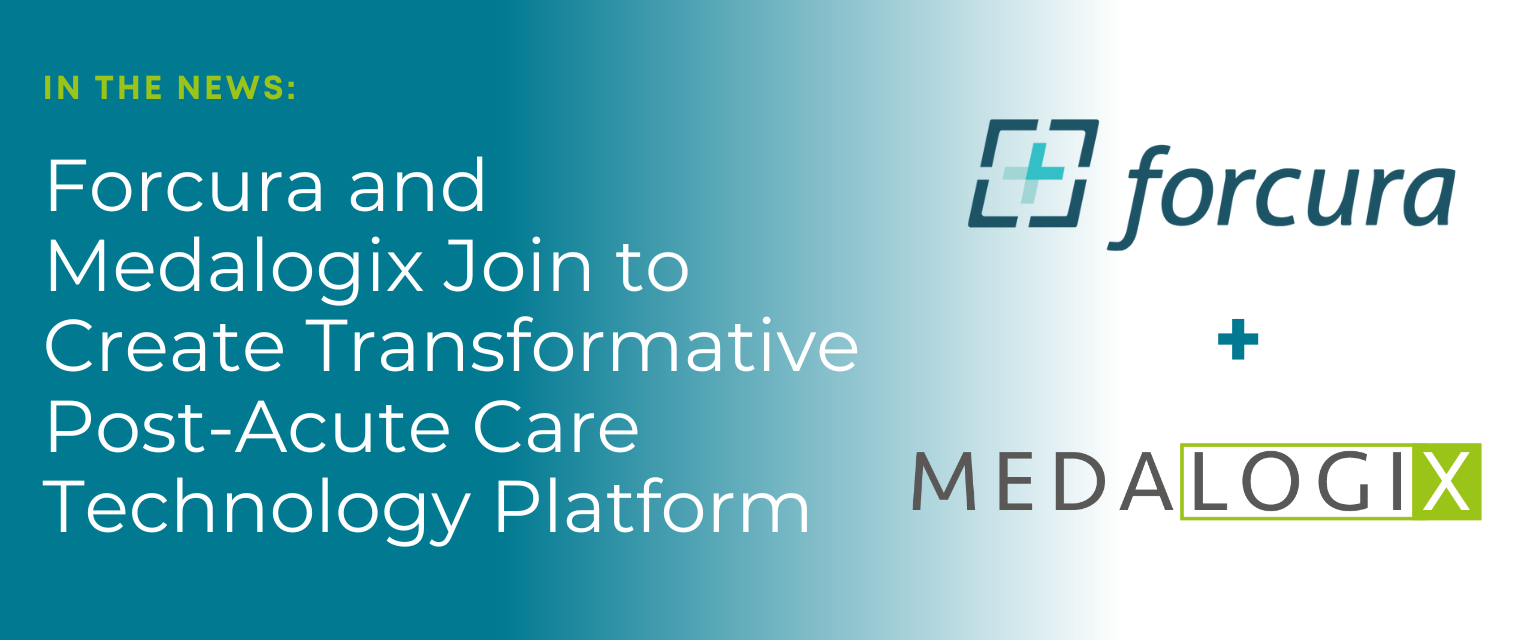Medalogix Products: Research-Backed Performance using Data Analytics
Predictive analytics, also referred to as data mining, machine learning, or statistical modeling, is the process of analyzing historical data patterns to make a prediction about the future. When applied to a patient scenario in the home health setting, historical data can provide a roadmap for high quality and efficient care. With models such as the Patient Driven Groupings Model (PDGM) and Home Health Value based Purchasing (HHVBP), the reliance on data when care planning can serve as the solution for quality and efficiency. Medalogix, a Nashville-based healthcare technology company, utilizes predictive analytics to drive clinical decision making in several meaningful ways as detailed below.
| Medalogix Product | Data Science Solution |
| Care | Leverages data science combined with clinical insights to recommend the optimal number of visits a patient needs to achieve a positive outcome |
| Bridge | Leverages data science to identify patients on home health census who are likely to pass away in the next 90 days |
| Nurture | Leverages data science to identify patients who have recently discharged from home health services and are at risk for decline and needing additional care |
| Touch | Leverages data science to identify patients who are at risk for hospitalization in the next 60 days |
Data Driven Decisions
The adoption of data science as a tool for clinical decision making can present challenges. Clinicians, who have historically built care plans based on factors such as judgement and education, may possess a healthy distrust of technology and require reinforcement that data science yields accurate predictions. There are also factors intrinsic to the clinician, and independent of the patient, that drive decision making such habit or preference. A common misconception is that use of data to drive decision making will minimize the importance of clinical judgment in patient care. In fact, when clinicians can confidently rely on data as a tool, they can use it to augment clinical decision making to create the optimal care plan leading to optimal outcomes. Medalogix solutions to apply advanced analytics on big data can yield optimal patient outcomes, and results have been validated by multiple studies across several providers representative of the home health market.
Studies: Impact of Medalogix utilization modeling on patient outcomesand transfer to inpatient (TIF) rates
Management of utilization is key to providing cost effective and efficient care. When implementing a solution such a Medalogix Care, caution must be taken to ensure that efficiency measures do not negatively affect patient outcomes critical to success under value-based programs. In a Medalogix study which analyzed the impact of Medalogix utilization modeling on patient outcomes, the Medalogix models were found to be specified and validated to perform well in prediction accuracy across 6 HHVBP outcome measures. The study which analyzed 33,106 closed episodes for modeling, captured the law of diminishing returns on the impact of visits on targeted HHVBP outcomes. The study demonstrated that marginal gains in outcome improvement decrease as more visits are provided to the same patient.1
In another study, which analyzed the impact of the Medalogix Care visit recommendation on transfer to inpatient facility (TIF) rate, results indicate that there is no adverse effect on TIF rate when Medalogix visit recommendations are followed. This includes cases for which patients receive fewer visits than typically provided.2
The results of these 2 studies confirm that leveraging Medalogix predictive analytics for utilization management can be an effective to ensure optimal resource utilization without a negative impact on important patient outcomes.
Studies: How effective predictive analytics can be leveraged to identify patient-specific risk
Regarding population health management, Medalogix has conducted several studies to determine how effectively predictive analytics can be leveraged to identify patient-specific risk. In one study, which compared how adoption of Medalogix Bridge correlated to early deaths on hospice census, results indicate that patients identified as high risk in Bridge who were subsequently transferred to hospice had a lower early death rate than non-Bridge patients. Specifically, Bridge patients were found to be 30% less likely to transition within 7 days after hospice admission.3 These results support the hypothesis that placing patients in Bridge workflow for monitoring, evaluation, and final referral to hospice can allow for more time for advanced care planning and optimal patient care at the end of life.
Two additional studies analyzing the impact of the Medalogix Touch tool on TIF rates demonstrated efficacy in utilizing predictive analytics to identify risk for hospitalization. In the first study, results indicated that patients receiving Medalogix Interactive Voice Recognition (IVR) program as part of their care plan had a transfer risk reduction of 5.5%. This suggests that patients in the IVR treatment group had a significantly lower transfer risk compared to untreated patients with similar observed characteristics.4 In another study, results demonstrated that patients who were identified and managed within Touch had a 6.4% transfer risk reduction compared to the control group.5 The results of these 3 studies confirm that utilizing Medalogix predictive analytics to first identify risk and acuity and then offer a solution to manage and evaluate high risk patients can be effective population health tools to improve outcomes.
Analysis: Multiple Implementations of Medalogix Products
There is a benefit to implementing more than one Medalogix solution to effectively impact outcomes throughout the patient journey. Analysis of a single agency utilizing the Medalogix Bridge, Nurture and Touch solutions has proved to be an effective population health management strategy to determine what care is needed and when. This has resulted in meaningful results such as growth of total hospice days by 74%, reduction in re-hospitalization by 32%, the identification of hundreds of post-discharged patients who would benefit from additional support, improved patient satisfaction, and streamlined processes and communication.6 The application of predictive analytics at different points in the patient journey provides added value by providing previously unknown insights into the entire patient population to drive action, manage risk and deliver high quality care.
Medalogix Products – Support Value-Based Initiatives
The Harvard Business Review article titled “Making Predictive Analytics a Routine Part of patient Care,” details the importance of incorporating predictive analytics into clinical practice to improve outcomes and lower costs.7The goal to provide value in the home health setting becomes increasingly relevant with regulatory and reimbursement changes such as what has been seen with PDGM and HHVBP. Medalogix provides the only home health predictive analytics solutions which can be used to successfully support value-based initiatives. Multiple studies have been conducted to support the efficacy of these solutions in managing resources, promoting positive outcomes, and providing insight into risk. Each study concludes that results can be relied upon and that the Medalogix solutions can effectively serve as clinical decision-making support tools.
Medalogix continues to apply data analytics and machine learning into its product portfolio.
Medalogix Pulse is the latest product release. A revolutionary home health visit-by-visit resource management solution that uses machine learning to inform the right care at the right time. Learn more at Medalogix.com/pulse.
References:
- Medalogix Home Health Utilization Management- A Review
- Change in 60 Day Transfer of Patients Under Home Health Visit Optimization by Medalogix Care
- The Impact of Medalogix Bridge on Early Mortality of Hospice Patients
- The Impact of Medalogix Touch on Home Health Transfer
- The Impact of Medalogix Touch on Home Health Transfer (Oct 2016)- A Review
- Leveraging Analytics and Clinical Transformation to Achieve “A Better Way to Care”
- https://hbr.org/2016/04/making-predictive-analytics-a-routine-part-of-patient-care
Related Blogs

Navigating Homecare’s Persistent Challenges with Technology-Driven Solutions
Authored by: Amanda Fabozzi, PT, DPT, Director of Clinical Services ...

Navigating the Transition: How Medalogix Muse Supports Hospice Agencies in the Shift from HIS to HOPE
Authored by: Steven Shelton, MBA, MSN, RN, CHPN; Senior Director, Clinic...

Forcura and Medalogix Join to Create Transformative Post-Acute Care Technology Platform
Berkshire Partners Will Serve as Lead Investor in the New Platform, with...


